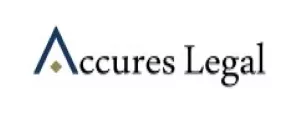Patent applications that are filed to protect an improvement or modification made to an existing invention already filed as patent is a patent of addition. The improvement or modification must be new and relate to the original invention. This type of patent is filed when an inventor has developed a new and improved version of their original invention and at the same time, wants to ensure that they have exclusive rights to that improvement as well.
Once a patent is filed or granted for an invention, it does not necessarily imply that the invention is complete. With the rampant technological developments taking place, improvements or modifications to the same invention are ample. Sometimes, such improvements may even lead to the development of a completely new invention. Here is where patents of addition come into the picture.
Sections 54, 55, and 56 of the Indian Patents Act, 1970 provide for patents of addition. Accordingly, if an application for the invention is a modification or improvement of the invention for which an application has already been filed or a patent has already been granted, the Controller may grant a patent of addition. However, the real issue at hand is what modification or improvement is required to be taken into consideration for a patent of addition.
The presence of certain elements common to both inventions is insufficient to prove that the proposed addition is an improvement or modification of the parent application or patent. In this regard, the Draft Manual of Patent Practice and Procedure provides that to determine whether the proposed patent of addition is an improvement or a modification of the parent application, the patent office has to properly compare the novel contributions that new specification has made to the art. It is simply not a comparison between the characteristics claimed in both applications. In a more technical sense, the word "improvement" might be understood to mean something that modifies the technological components employed in the main invention, as opposed to merely offering a different method of accomplishing the same result.
Here are some other pointers to determine the modification or improvement in the proposed application from that of the parent application or patent:
- If the proposed addition can be practiced without infringing the main patent, then patent of addition can be granted. It can be analyzed by comparing the complete disclosure of both applications from the perspective of a person skilled in the art of the technology.
- Whether such a modification or improvement was obvious at the time of filing the parent application? If it was, then one could not apply for a patent of addition.
The three essential requirements for attaining a patent are novelty, utility, and inventive step. However, a patent of addition cannot be challenged on the ground of a lack of inventive step for the disclosure made in the patent of addition in view of the parent application/patent (Ravi Kamal Bali v. Kala Tech and Ors. 2008). If all three requirements are satisfied, then another alternative available is to submit an independent patent application. In this instance, whether to file for a patent of addition or a new patent application depends on the patentee.
The content of this article is intended to provide a general guide to the subject matter. Specialist advice should be sought about your specific circumstances.


